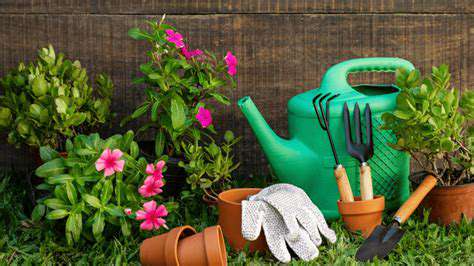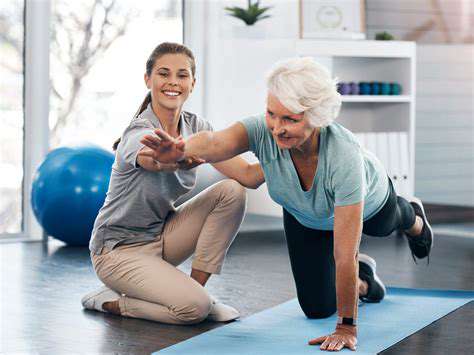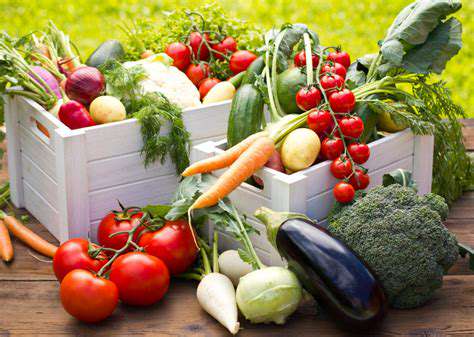Gentle Movements While Gardening for Senior Health
Tailoring Gardening Tasks to Suit Senior Needs
Prioritizing Safety and Accessibility
Safety should always come first when gardening, particularly for older adults. Adapting the garden space to enhance accessibility can dramatically lower the chances of accidents and injuries. Consider adding ramps or broader walkways, utilizing raised garden beds to make plant care easier, and ensuring adequate lighting, especially during dawn and dusk. These adjustments can transform gardening into a safer and more pleasurable activity for seniors.
Opting for tools with ergonomic grips and lightweight construction can alleviate stress on joints and muscles. Specialized gardening aids like hand-held magnifiers and reachers enable seniors to complete tasks with greater comfort and efficiency.
Simplifying Planting Procedures
Planting can pose challenges for seniors with physical constraints. To simplify, begin seeds indoors or purchase pre-grown seedlings to minimize physical exertion. Raised garden beds also make planting and harvesting far more convenient.
Organizing plants by type streamlines maintenance. This approach cuts down on time spent locating specific plants or navigating the garden space.
Streamlining Watering Techniques
Watering demands physical effort, which can be difficult for those with mobility concerns. Drip irrigation systems or soaker hoses save considerable time and energy, letting seniors focus on enjoying their garden.
Lightweight watering cans with comfortable handles reduce strain. Automated timers offer additional convenience for consistent plant hydration.
Selecting Appropriate Plant Choices
Low-maintenance plants are ideal for senior gardeners. Drought-resistant varieties and compact plants that need minimal pruning reduce upkeep demands while still providing visual appeal. Choose plants with vibrant blooms and foliage visible from seated positions to eliminate excessive bending.
Modifying the Garden Design
Thoughtful garden layouts enhance accessibility and enjoyment. Incorporate raised beds and wide pathways for easy movement. Strategically placed seating areas allow for rest periods while admiring the garden's beauty.
Incorporating Gentle Movements
Gardening should involve light, manageable activities like weeding and harvesting. Focus on tasks that can be done seated or with minimal bending. Regular breaks prevent overexertion and maintain energy levels.
Creating a Supportive Environment
Community support enriches the gardening experience. Involve family or friends for demanding tasks. Joining gardening clubs provides social interaction and shared knowledge, fostering a sense of belonging.
Incorporating Strength and Flexibility Exercises into Gardening Routines

Improving Physical Performance
Strength training enhances muscle mass, directly boosting performance in daily activities. Better strength improves posture and reduces injury risks. Flexibility exercises increase joint mobility, creating smoother movements and preventing strains.
Injury Prevention and Recovery
Stronger muscles and connective tissues provide joint stability, lowering injury risks. Combining strength and flexibility work accelerates recovery by promoting faster healing.
Enhanced Athletic Performance
Strength and flexibility training significantly boost athletic capabilities. Greater power improves speed and jumping ability, while flexibility enables more efficient motion.
Maintaining Joint Health
Strength training supports joints by building surrounding muscles. Regular exercise preserves joint function throughout life. Flexibility work reduces stiffness and discomfort.
Improved Body Composition
Strength training increases metabolism, aiding weight management. This metabolic boost makes maintaining healthy body composition easier. Flexibility supports consistency by preventing injuries.
Boosting Self-Confidence
Physical improvements foster greater self-assurance. Visible progress enhances motivation and self-esteem across all life areas.
Stress Reduction and Mental Well-being
Exercise releases mood-enhancing endorphins. Regular physical activity effectively manages stress and promotes mental clarity. The focus required cultivates mindfulness.
The Mental and Emotional Well-being Benefits of Gardening
Connecting with Nature
Gardening fosters deep nature connections, offering respite from daily stresses. The sensory experience—feeling soil, smelling blooms—creates holistic engagement that calms and restores.
Stress Reduction and Relaxation
The rhythmic nature of gardening induces meditative states. Creating beauty boosts self-esteem while observing nature's details inspires wonder.
Improved Mood and Emotional Regulation
Sunlight and fresh air elevate serotonin levels. Nurturing plants provides purpose and accomplishment, enhancing emotional balance.
Physical Health Benefits
Gardening serves as enjoyable low-impact exercise. Activities engage multiple muscle groups while sunshine and fresh air amplify benefits.
Enhanced Creativity and Mindfulness
Designing gardens sparks creativity. The focused attention required cultivates present-moment awareness and mental clarity.
Safety Precautions and Adapting to Individual Needs
Prioritizing Safety Gear
Proper attire is essential, including protective clothing and sturdy footwear. Gloves shield hands, while eye protection prevents debris injuries.
Understanding Individual Physical Limitations
Consult healthcare providers before strenuous activity. Listen to your body's signals and gradually increase activity levels.
Adapting Techniques for Different Tasks
Use kneeling pads for weeding and ergonomic tools for pruning. Practice proper lifting techniques to prevent back strain.
Managing Environmental Factors
Monitor weather conditions and stay hydrated. Apply sunscreen regardless of cloud cover.
Modifying Techniques for Specific Conditions
Adjust tools and methods for arthritis or mobility issues. Seated gardening options maintain participation.
Utilizing Ergonomic Tools and Techniques
Choose tools with comfortable grips and adjustable features. Supportive equipment like benches enhances comfort.
Prioritizing Plant Safety
Minimize chemical use and follow product instructions carefully. Organic methods protect both plants and gardeners.











